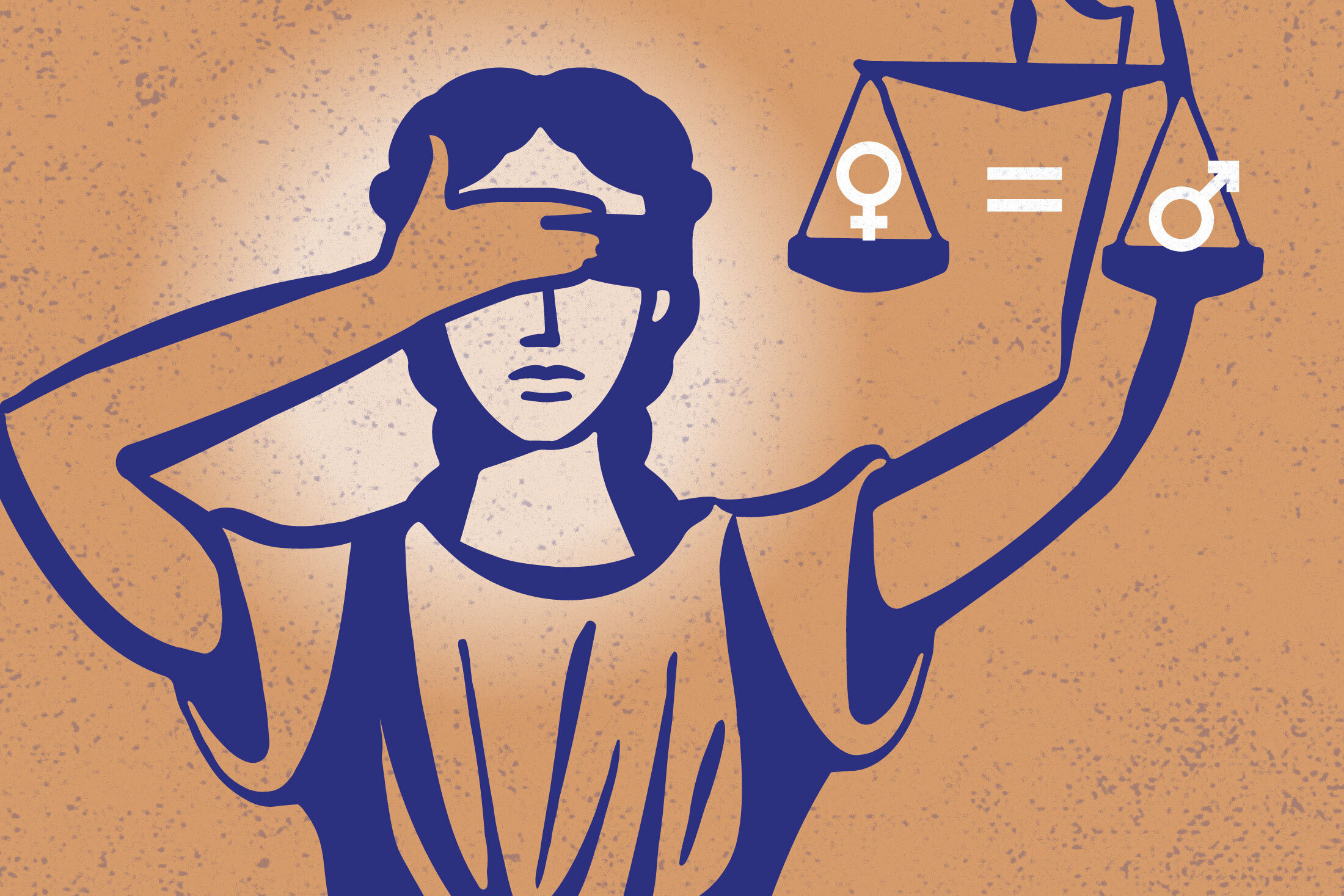How Intermediate Scrutiny Protects Women and Girls
Recognition of sex is a precondition of equal treatment.
When a law or government policy is challenged, the court’s power to review it—also called ‘scrutiny’—depends upon who or what is impacted by that law or policy.
“Strict scrutiny, the highest level, applies to “suspect classes” (race, religion, and national origin) and to “fundamental rights” such as marriage or voting. Under strict scrutiny, the government has the burden of proof to show that there is a “compelling state interest” behind the policy and that the policy is “narrowly tailored” to achieve the result. This is an extremely high bar to pass.
Intermediate scrutiny (sometimes called ‘heightened’ or ‘elevated’ scrutiny) is in the middle. As with strict scrutiny, the burden of proof is on the government, but here they only need to prove that there is an “important government objective” and that the law or policy is “substantially related” to achieving that objective.”
Intermediate scrutiny applies to “quasi-suspect” classes, including characteristics such as sex and sexual orientation, as well as rights such as freedom of speech. The bottom line is that the government can almost never treat people differently based on things like race, while they can sometimes treat people differently based on sex, if it serves an important policy consideration. In practice, this has provided women broad protection against discrimination, while preserving the right to provide things like female-only sports, sex-segregated prison housing, and female nurses for intimate exams.
Public schools illustrate the difference between strict and intermediate scrutiny. In 1896, the Supreme Court ruled in Plessy v. Ferguson that race-segregated public transportation was not unconstitutional. Widely considered to be one of the most shameful decisions in its history (along with Dred Scott), the Court said the 14th amendment did not eliminate all “distinctions based on color” as long as the facilities provided were equivalent in quality—This was known as the “separate but equal” doctrine.
Sixty years later, the Supreme Court wisely reversed their stance in Brown v. Board of Education of Topeka, ruling that “separate but equal” was in fact a violation of the 14th amendment. It is noteworthy that the Topeka schools were actually considered equivalent in quality, as districts had typically been moving to meet this benchmark in recent years. However, the Supreme Court still ruled segregation in education unconstitutional, saying “separate educational facilities are inherently unequal.”
While permitted in many contexts, single-sex schools are often viewed skeptically when legally challenged. The landmark case, United States v. Virginia, was remarkable not only because it struck down the last all-male public university, but also because it grappled directly with the appropriate standard of review. The majority opinion said that the Virginia Military Institute (VMI) did not show “exceedingly persuasive justification” for its sex-based admissions policy, which violated the Equal Protection Clause of the 14th amendment. During the course of litigation, Virginia had opened a women’s equivalent of the VMI, but the Court still ruled that it simply did not—and could not—offer the same facilities, funding, and prestige associated with the VMI.
While this decision was reached from intermediate scrutiny and left room for single-sex schooling in other contexts, the language used in the reasoning was more akin to strict scrutiny. Concerned about this, Chief Justice Rehnquist wrote a concurring opinion (meaning he agreed with the result of the case but not the legal analysis) in which he said that if Virginia had in fact been able to provide equivalent opportunity for women, they would have satisfied their constitutional obligation. He also reasoned that separate but equal facilities were not automatically a violation of Title IX sex discrimination, saying “it is not the ‘exclusion of women’... but the maintenance of an all-men school without providing any—much less a comparable—institution for women.”
Justice Rehnquist’s reasoning is in line with a famous quote from Justice Ginsburg which said that any law is unconstitutional if it “denies to women, simply because they are women, full citizenship stature—equal opportunity to aspire, achieve, participate in and contribute to society.” However, differential treatment based on sex in education does not inherently deny women full citizenship stature. Title IX of the Education Amendments of 1972 specifically allows schools to discriminate in public education for sports, bathrooms, locker rooms, sex education, and various other provisions. The law recognizes that such segregation is a necessary component of female participation in education and athletics that it is—in line with Justice Ginsburg’s thinking—a part of the pathway to equal opportunity, rather than an obstacle to it.
As discussed in the first article in this series, while providing different facilities for different groups is a form of discrimination, it is not de facto negative. It is discrimination to provide preferred parking spots to people with disabilities, to exclude heavyweight boxers from the flyweight class, and to provide special pricing for students or for senior citizens that are not available to the general public. Discrimination can be just and necessary, and this is the case in certain circumstances with sex. Intermediate scrutiny permits courts the flexibility to allow different treatment when there is a good reason for it.
Some feminists saw the Virginia decision as unnecessarily restrictive, and felt that offering students a single-sex option could be beneficial. Senator Hillary Clinton included a provision in the No Child Left Behind Act which broadened the ability of public schools to provide single-sex offerings, so long as they were voluntary and equivalent in quality. This was a welcome development to many families who sought choice for how to educate their kids, including some parents of Black and Hispanic boys who felt traditional classrooms were failing their sons. Still, it was also a controversial move and has been vigorously opposed by groups like the ACLU.
In an issue paper the ACLU wrote that “the behavioral, psychological, and cognitive differences among the individual members of any group of girls or any group of boys are much greater… than the differences between boys and girls as a group.” Putting aside the questionable veracity of this statement, it comes from an unreliable narrator.
In Schools In Transition, the ACLU offers the exact same reasoning to argue against female-only sports: “Focusing on the perceived differences between males and females too often obscures the fact that there is great variation among [males] and [females].” They state that sex-segregated sports are “unfounded and often grounded in sex stereotypes about the differences and abilities of males versus females.” This is contrary to well-established science, law, and common sense. We must not defer to the ACLU as an authority when it similarly says that (voluntary) sex-segregated classrooms “rely on and perpetuate outdated and harmful gender stereotypes.”
In addition, “behavioral, psychological, and cognitive differences” are not the only reason why families may prefer single-sex education. Schools are too often rife with sexual harassment—Some female students may prefer a less disruptive learning environment where they know they will be safer physically and psychologically. Single-sex schools also allow full participation by certain conservative religious minorities who have strict rules on sex segregation. It is beneficial for girls from these families to have the choice to attend public school, especially when the alternative may be home-schooling or no schooling, if the family cannot afford private school.
There is nuance to legal recognition of sex that does not exist with regard to legal recognition of race—This informs the level of scrutiny with racial segregation vs. sex segregation in school. It is not fair to compare the considerations behind sex-segregated classrooms with the considerations behind race-segregated ones. The difference in judicial review is not a hindrance to women’s equality—To the contrary, the built-in flexibility is a tool to ensure equality.
We do not want to shift to a framework in which there is practically no circumstance in which the government is ever allowed to treat men and women differently. It leaves women and girls vulnerable to losing valuable protections against sex discrimination…and that is before we even consider the serious harm done to sex discrimination jurisprudence by gender identity ideology.
Learn More About Why WoLF Opposes the ERA
This article is part of a series of posts on the feminist argument against the ERA






